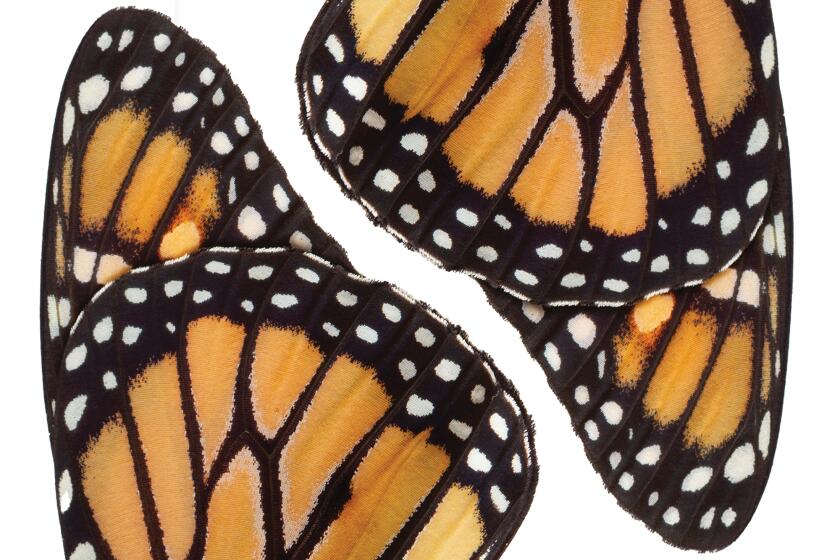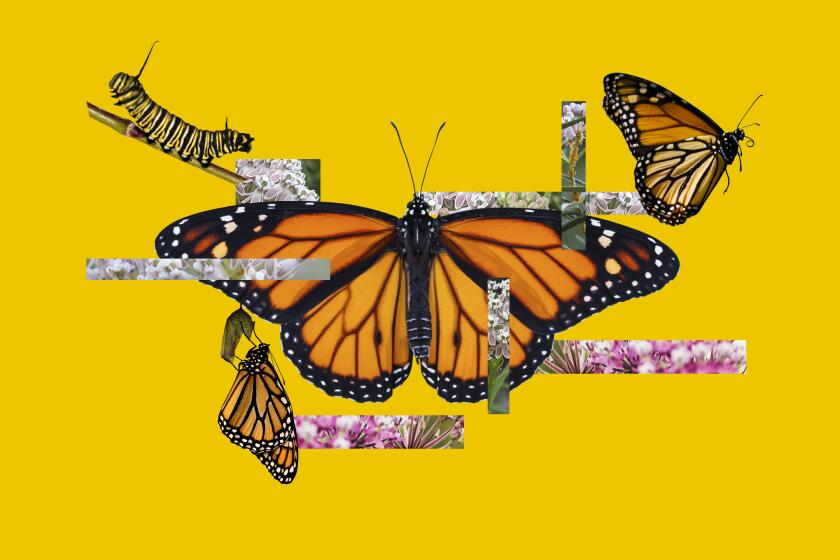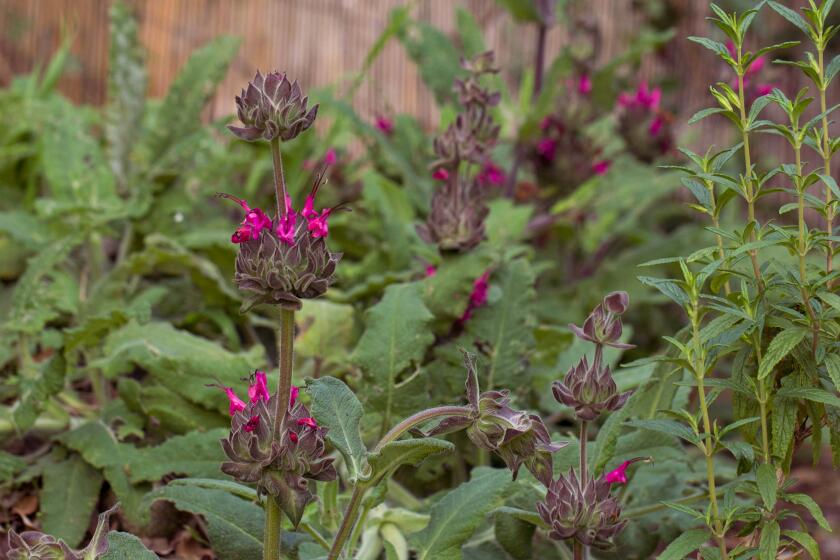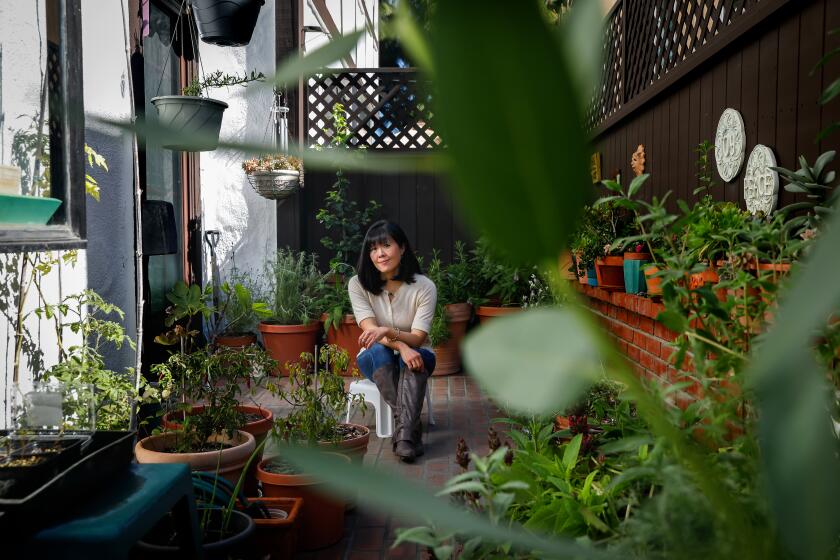Monarch butterflies appear to be everywhere these days. Is the crisis over?
- Share via
The anecdotes abound this year — friends reporting magical clusters of monarch butterflies on their walks, dozens of organizations offering free giveaways of native milkweed and projects to restore habitat, even a lone monarch gracefully fluttering outside my window AS I’M WRITING THESE WORDS.
What more proof do we need?! Western monarchs are back! Problem solved! Crisis averted!
If only, says Emma Pelton, conservation biologist for the Xerces Society for Invertebrate Conservation.
Western monarch numbers are vastly improved over the winter of 2020-21, when researchers counted less than 2,000 of the iconic pollinators overwintering along the Central and Southern California coast. Over the past two years, those numbers have grown to nearly 300,000, according to the annual Western Monarch Counts around Thanksgiving and again around the new year.
We spent the day with L.A. County’s top monarch butterfly counter, and ask: Can this endangered species survive?
But that’s still around 90% below the historic norms seen in the 1980s, Pelton says, when an estimated 1 million to 15 million monarch butterflies overwintered along the California coast, clustering on trees in numbers so great their combined weight sometimes broke branches. (Note that these numbers do not include the far larger population of Eastern monarchs, who migrate from the eastern and central regions of Canada and the United States to overwinter each year in the Transvolcanic Mountains of central Mexico.)
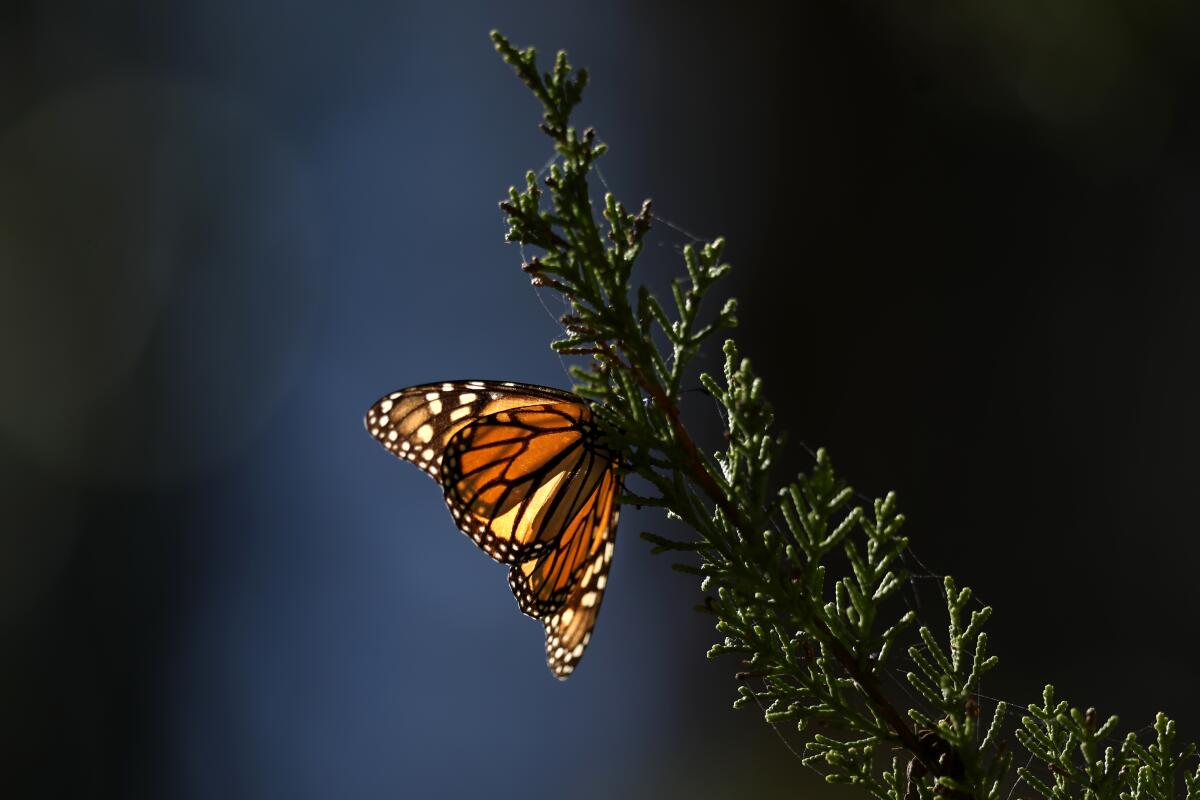
“People get excited about these year-to-year variations,” says Pelton, who oversees the organization’s Western monarch research. “And compared to 2020, it definitely looks better. But when we zoom out and look at the numbers three decades ago, we can see there’s still a long road ahead for a lot of recovery.”
Another concern for researchers is that they still don’t know why the Western monarch’s population collapsed in 2020, and then improved the following years.
“The fact that they did is a hopeful sign, and testimony to these animals being really resilient,” Pelton says. “But will their numbers drop that low again? We don’t know, and if they do drop that low again, we don’t know if they could come back, because it was kind of an incredible rebound.”
Scientists are eager to see the numbers for 2023-24, and are encouraging volunteers to sign up and get trained ASAP to help with the two Western Monarch Counts this year, scheduled between Nov. 11 and Dec. 3 (the Thanksgiving count) and Dec. 23 to Jan. 7 (the New Year’s count).
Monarch butterfly populations are endangered, to the point that the 1.2 million Western monarchs counted in 1997 plummeted to fewer than 2,000 by 2020. Here are ways we can help them survive.
In addition to the online training videos, a free training session is scheduled for Nov. 4 at the Rustic Canyon Recreation Center in Santa Monica from 7 to 8:30 a.m. and requires advance registration.
The counting sites are mostly along the coast, as far north as Mendocino County and south into Baja California. In Southern California, there are count coordinators in Santa Barbara, Ventura, Los Angeles, Orange and San Diego counties.
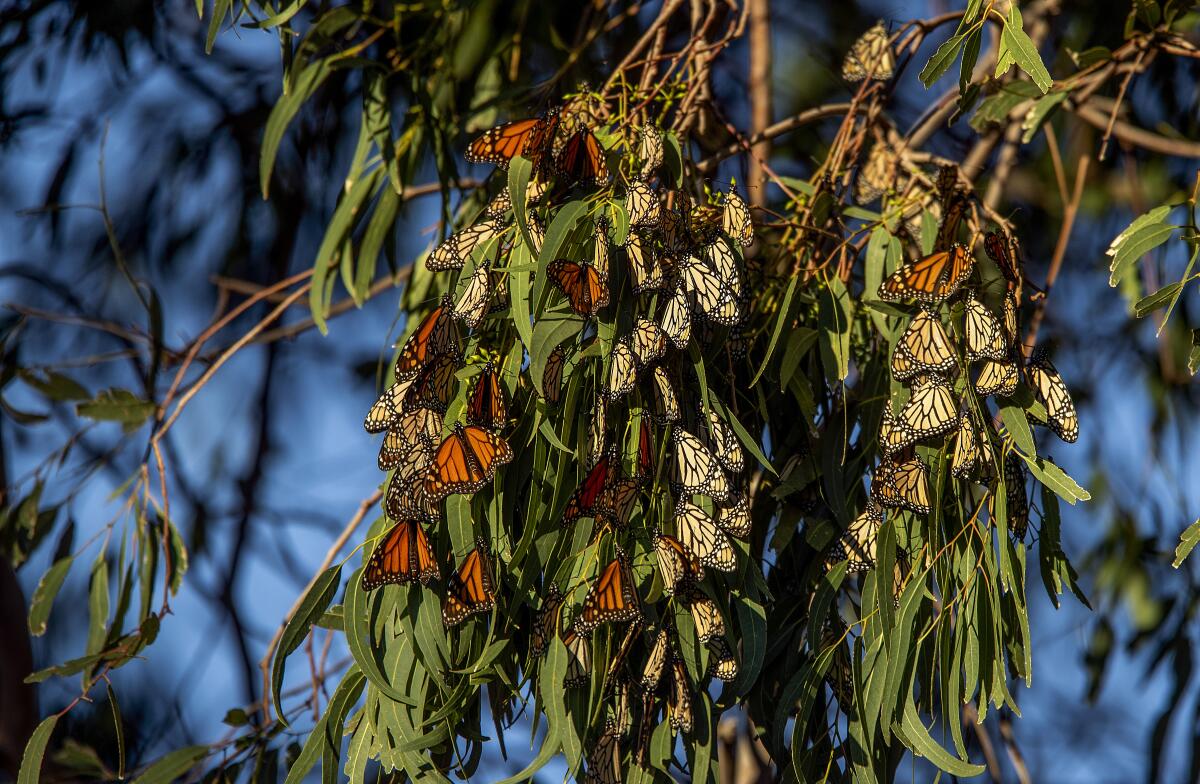
Counters typically work in pairs, and do their work in the early morning just after sunrise, when it’s too cold for the monarchs to fly. The butterflies cling in clusters on tree branches, especially pine and eucalyptus groves where they can be somewhat sheltered from the wind and rain and wait for the temperatures to warm above 60 degrees so they can fly in search of water and nectar flowers, their only food as adults.
The counts are done about a month apart at 169 overwintering sites, to see how the monarch populations change during the winter. Last year, for instance, about 335,000 monarchs were tallied at the Thanksgiving Count, but the number dropped to around 116,000 during the New Year’s Count, a 58% seasonal drop, higher than the typical 35% to 49% drop seen in previous years. Researchers believe last winter’s heavy rains could have played a role, and they wonder whether the warm, wet El Niño weather predicted for this winter will have a similar impact.
If you’ve removed your lawn and want native plants in your new landscape, check out these ground covers recommended by pros, plus a list of October plant events.
All this uncertainty is why scientists aren’t exalting about the uptick in monarch populations.
Is native milkweed helping?
But what about all the native milkweed people are planting in their yards or in pots on their balconies? And all the habitat restoration projects at sites around SoCal, such as Santa Monica Mountains Fund’s ongoing work at Satwiwa Potrero Creek in Newbury Park, Project Monarch L.A.’s work at Los Angeles State Historic Park, the Ventura County Resource Conservation District’s work around Oak Park High School and the Arroyos & Foothills Conservancy Monarch Recovery Project around San Gabriel foothills communities like Pasadena? The South Bay Parkland Conservancy in Redondo Beach, Palos Verde Peninsula Land Conservancy and Friends of the Ballona Wetlands in Marina del Rey sponsor habitat restoration projects throughout the year to support monarchs and other animals as well.
Aren’t all those projects and milkweed giveaways making a difference?
“I hesitate to link the rebound we saw in 2021, say, to any specific actions because we don’t understand the [monarch] system well enough to say, ‘This is what did it,’” Pelton says.
“So as a scientist, I have to say ‘We don’t have a study so we can’t say whether it’s helping.’ But if I take off my scientist hat for a minute; based on anecdotes, intuition and logic, then I have to say, ‘Of course it’s helping. How can it not?’”
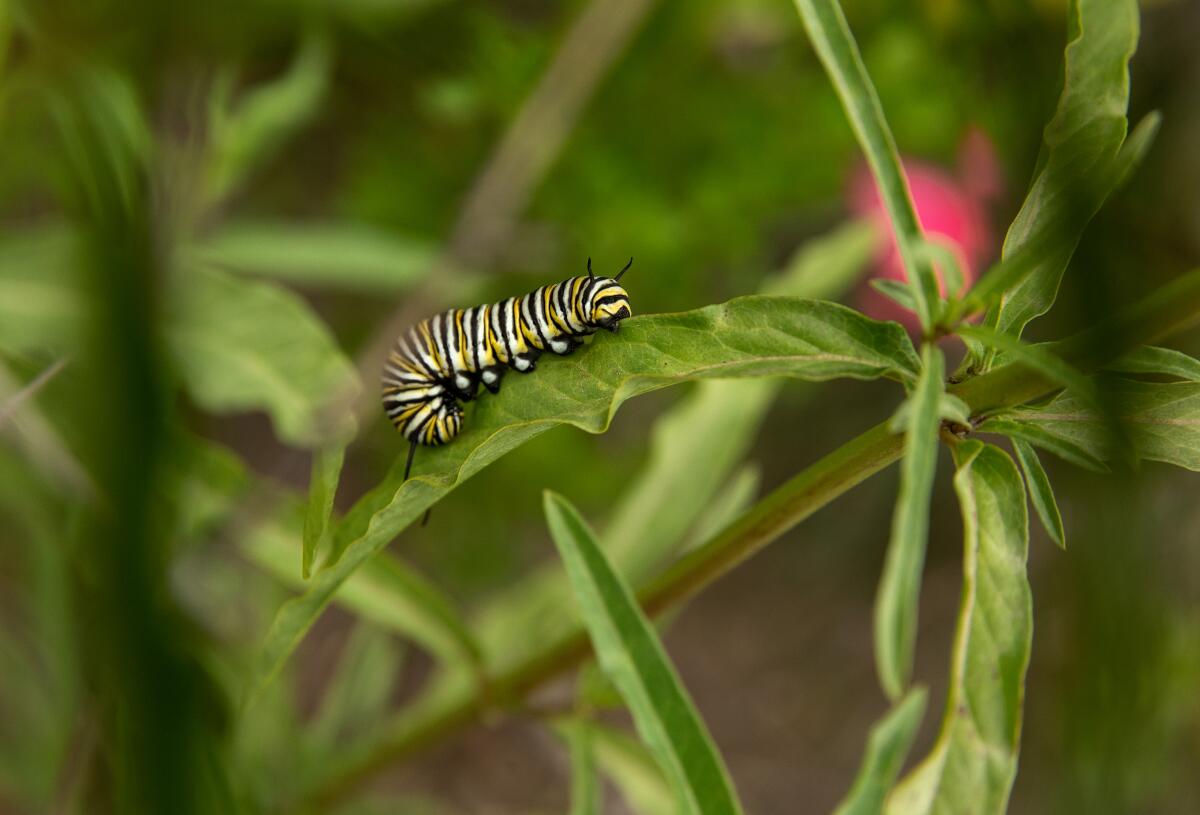
Even if we can’t draw a direct line from milkweed plantings on Google’s corporate campuses in California, for instance, or in an increasing number of SoCal yards, Pelton says these projects are working to build awareness about the importance — and plight — of all insects, the disastrous impact pesticides have on pollinators and the importance of restoring habitat in urban areas.
“So the monarch’s role as a flagship insect is really powerful,” Pelton says. “The fact that monarchs bounced back is a good reason to continue this conversation and go beyond monarch myopia to say, ‘If you’re planting one native plant to help this animal, maybe you can plant a few more to help other animals too.’”
California native plants have many pros, but their potent scents are the biggest draw of all. Gardening experts share the most fragrant native plants.
Bird-watching has become a national passion involving millions of Americans focused on their well-being, she says, adding, “Wouldn’t it be cool if we had that interest and money from people looking out for bugs?”
This is already happening in some cases. A Xerces Society project based in Riverside known as the California Bumble Bee Atlas is signing up community scientists throughout the state to observe California’s 25 species of lovable bumblebees, the roly-poly pandas of the insect world. These native bees are among many threatened species in the insect world, Pelton says, but because they’re so endearing it’s easier to find people to sign on. (Not convinced? Check out the plethora of adorable photos capturing bumblebees sleeping in flowers.)
For the record:
1:10 p.m. Oct. 30, 2023An earlier version of this article stated that the California Bumble Bee Atlas project is a Xerces-supported group in Riverside. The project, based in Riverside, is run by the Xerces Society and tracks bumblebees around the state.
“A lot of people have visceral reactions when they think of bugs; they think of mosquitoes or bedbugs or yellow jackets,” Pelton says, “but insects are the most diverse group of animals on the planet and the nuisance pests are really a small percentage. Most are beneficial or neutral to humans, and vital to our ecological functions, not just for pollination, but in creating soil and decomposing .... They’re the reason we don’t have piles of poop everywhere.”
How we can help monarchs
There are plenty of easy things we can do to support insects, but it will require a change in how we manage our urban settings. The Xerces website already has tips about keeping leaves, hollow stems and brush piles in your yard instead of raking them away, to help insects and other small creatures find protection during the winter. Avoid using pesticides and herbicides in your yard because those are so damaging to pollinators and other beneficial insects.
And whenever possible, add native plants to your landscape. In coastal areas, it’s especially important to include winter-blooming natives such as California lilacs (Ceanothus), manzanita, blue dicks (Dichelostemma capitatum) and seaside daisies (Erigeron glaucus) to provide food for overwintering monarchs.
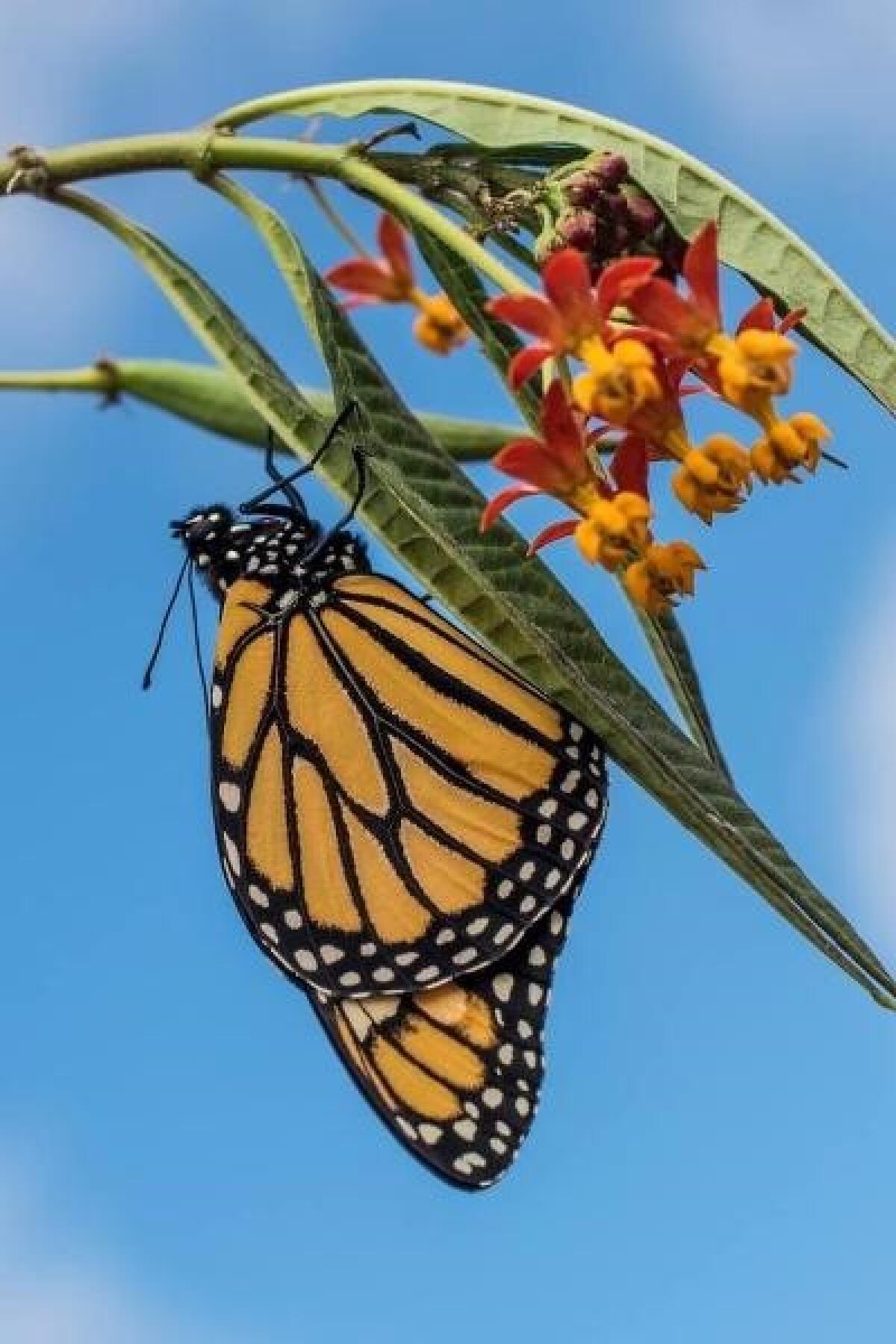
Milkweed, of course, is the only food that monarch caterpillars eat, making it crucial for their survival. But here we come to the struggle between creating habitat and pretty landscapes in our yards. Scientists have discouraged people from planting tropical milkweed, a showy non-native plant that’s problematic in California because, unlike native milkweeds, it doesn’t die back during the winter. That allows harmful protozoa parasites (Ophryocystis elektroscirrha, or OE) to multiply on the plants and infect the caterpillars eating the plant. Scientists believe OE is harming adult monarchs, and contributing to their decline. The state has classified tropical milkweed as a B-rated noxious weed that spreads easily, and some areas, such as Ventura County, have banned its sale in nurseries out of concern that the plants will crowd out native varieties.
The problem is this: Narrow leaf milkweed (Asclepias fascicularis) grows natively throughout California, making it an easy choice for habitat gardens around the state. But it also grows slowly, looks weedy and takes a long time to bloom. There are other native milkweeds, but they are typically harder to find. Tropical milkweed, on the other hand, is a pretty landscaping plant that’s easy to find. It grows quickly, with dramatic purplish-green stems and bright orange and red flowers that erupt into fluffy seed balls. (It’s also as invasive as dandelions in my yard, and just as tenacious, no matter how many times I pull out the starts).
Bottom line: If you must have tropical milkweed, cut it down to the ground each fall before it goes to seed, to kill any overwintering protozoa and reduce its potential to spread to neighboring areas. Native narrow leaf milkweed is an important food for many insects, not just monarchs, but it may take a few years to get established. Plant it behind prettier shrubs if you don’t like its weedy appearance because remember, the idea is to create habitat for threatened animals.
Barbara Chung fell in love with native plants, but she didn’t have a yard. So she created a habitat garden in pots on her tiny townhouse patio in Santa Monica.
The vital roles of insects can’t be overstated, Pelton says. “Without insects and plants, we don’t have a planet, but a lot of people don’t understand that, because they’re so small and not as charismatic as other animals. Many insects are in worse shape than monarchs and bumblebees, but when a big flagship species we care about is declining, it gets people’s attention. It really indicates that something is happening.”
More to Read
Sign up for The Wild
We’ll help you find the best places to hike, bike and run, as well as the perfect silent spots for meditation and yoga.
You may occasionally receive promotional content from the Los Angeles Times.
